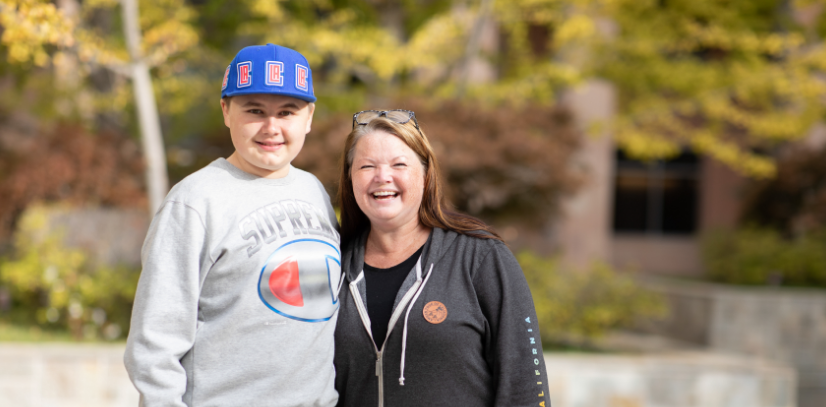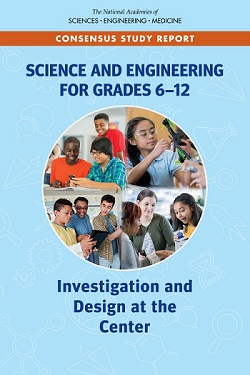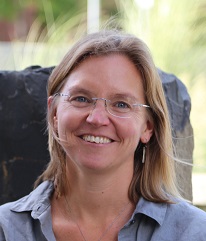
How do we make change happen in education? Not just one teacher engaging more students, or one school increasing student achievement, or one state legislating smaller class sizes, but transformative change that shifts the entire system to a new equilibrium?
As a faculty member at a university and a science teacher educator, this is a question that I think about a lot. Education is a complex system, with many interacting components. Our students who seek to be science and math teachers have to pass certification tests administered by the state, and our preparation programs are endorsed by the state. National legislation holds states and schools accountable for student achievement. Teachers are hired by districts in communities with a variety of specific needs. Transformative change requires nudges to all components of the system to push it in the desired direction. But where does the desired direction come from? How do we know how we want to shift the system?
This is where research comes in. Educational researchers ask questions about the effectiveness of particular strategies or curricular materials in improving student learning, persistence, and motivation. They ask questions about how to best prepare teachers for high-impact teaching in the classroom. They seek to understand the factors that influence student learning and motivation. The results of these studies are published and disseminated through scientific journals, but it often takes time for the results of research to percolate into the classroom, creating a divide between research results and applied practice.
To bridge that divide, a powerful approach is to summarize and synthesize the results of accumulated research and present that synthesis along with recommended strategies for implementing what has been learned. That’s an approach that the National Academies of Sciences, Engineering, and Medicine have taken in leading the development of consensus reports.
A consensus report is written by a committee made up of people with a range of expertise and experience – people who can provide different perspectives on complex issues. In general, their charge is to review and synthesize the available research and to make recommendations about how to move forward.
About 15 years ago, the National Academies assembled such a committee “to review the status of and future directions for the role of high school science laboratories in promoting the teaching and learning of science for all students.” The report, published in 2006 and entitled America’s Lab Report: Investigations in High School Science, articulated seven learning goals that laboratory experiences should support, and the committee concluded that few laboratory experiences achieved these goals. The goals, grounded in evidence from educational research, provided a variety of guidance for curricular reform efforts, leading to long-term changes in many areas, such as the layout of high school science classrooms and the development of what they termed “integrated instructional units.”
A lot has happened in science education since 2006. The concept of STEM—integrated science, technology, engineering, and math—has blossomed. In 2012, a new vision for the science classroom was articulated in A Framework for K–12 Science Education, a vision in which student learning is developed through integrating the three dimensions of scientific and engineering practices, cross-cutting concepts, and disciplinary core ideas. The Framework provided guidance for the development in 2013 of the Next Generation Science Standards and related standards that have been adopted by a majority of states. Over the same time period, technology has advanced considerably and access to computers and the internet has become more widespread in schools, opening doors to new kinds of investigations that make use of a wide variety of data and sophisticated analyses. And—no less important—the demographics of the student population have changed, and inequities in the distribution of resources between communities have persisted and grown.
The time was ripe, therefore, to update America’s Lab Report—what does this newly envisioned science classroom actually look like? What are teachers and students actually doing when they integrate the three dimensions, and how do we know if it works? How do we truly reach all students? With funding from the Amgen Foundation, the National Academies again brought a committee together with a new charge: to review research published since 2006 and “provide guidance for designing and implementing science investigations and engineering design for middle and high school students that takes into account the new vision for science education embodied in the Framework… and standards based upon it.” As a member of that committee, I brought my perspective as a teacher educator and a geoscientist, while others brought their perspectives as teachers, scientists, engineers, education researchers, and more. The report, however, is not simply a compilation of the committee members’ perspectives—it represents our consensus, reached over a year or so, about the findings from the research and recommendations for moving forward.

The new report is entitled Science and Engineering for Grades 6–12: Investigation and Design at the Center. One of the first things the committee worked to define was the change from “laboratory experiences” to “investigation and design.” Science investigations and engineering design may or may not take place in a laboratory, but they are purposeful, driven by questions about phenomena, engage students in the practices to build understanding, and make use of students’ contexts and backgrounds. Our first conclusion, based on accumulated evidence from the research, is that “investigation and design are more effective for supporting learning than traditional teaching methods,” and that engaging students in doing science and engineering increases both their conceptual understanding and their problem-solving skills.
We also concluded that putting investigation and design at the center represents a dramatic shift in the current classroom dynamic. When engaged in investigation and design, students talk to each other and make explicit their developing understanding through artifacts and models; teachers facilitate productive discussions and provide opportunities for students to demonstrate their reasoning. These new roles for teachers in the classroom ripple out and require changes in other components of the educational system, including universities that prepare future teachers and school districts and administrators that set policies and select curricula.
As a committee, we also came to consensus about specific recommendations for teachers, university faculty, administrators, district staff, and others in the educational system for implementing the conclusions of the report. What does consensus mean in this case? We went through each conclusion and recommendation word by word and made sure we were all in agreement. In some cases, this was an easy process, but some recommendations took longer.
The committee devoted significant time to discussion of inequities in the current system. We concluded that the use of inclusive pedagogies “can support the learning of all students by situating differences as assets, building on students’ identities and life experiences, and leveraging local and dynamic views of cultural life for the study of science and engineering.” While this can help address inequity at the classroom level, we also recommended that administrators at all levels work to address inequities in policies and resource distribution that can impact student learning.
These consensus reports provide the evidence for individuals and groups to push for transformative change. Support from the Amgen Foundation makes reports like this possible, and creates the potential for our work to have a significant and lasting impact on STEM education across the United States.
For more information and to read the report, please click here.

Anne Egger is an Associate Professor of Geological Sciences and Science Education at Central Washington University and a former president of the National Association of Geoscience Teachers (NAGT). She is a member of the Committee on Science Investigations and Engineering Design Experiences in Grades 6-12.